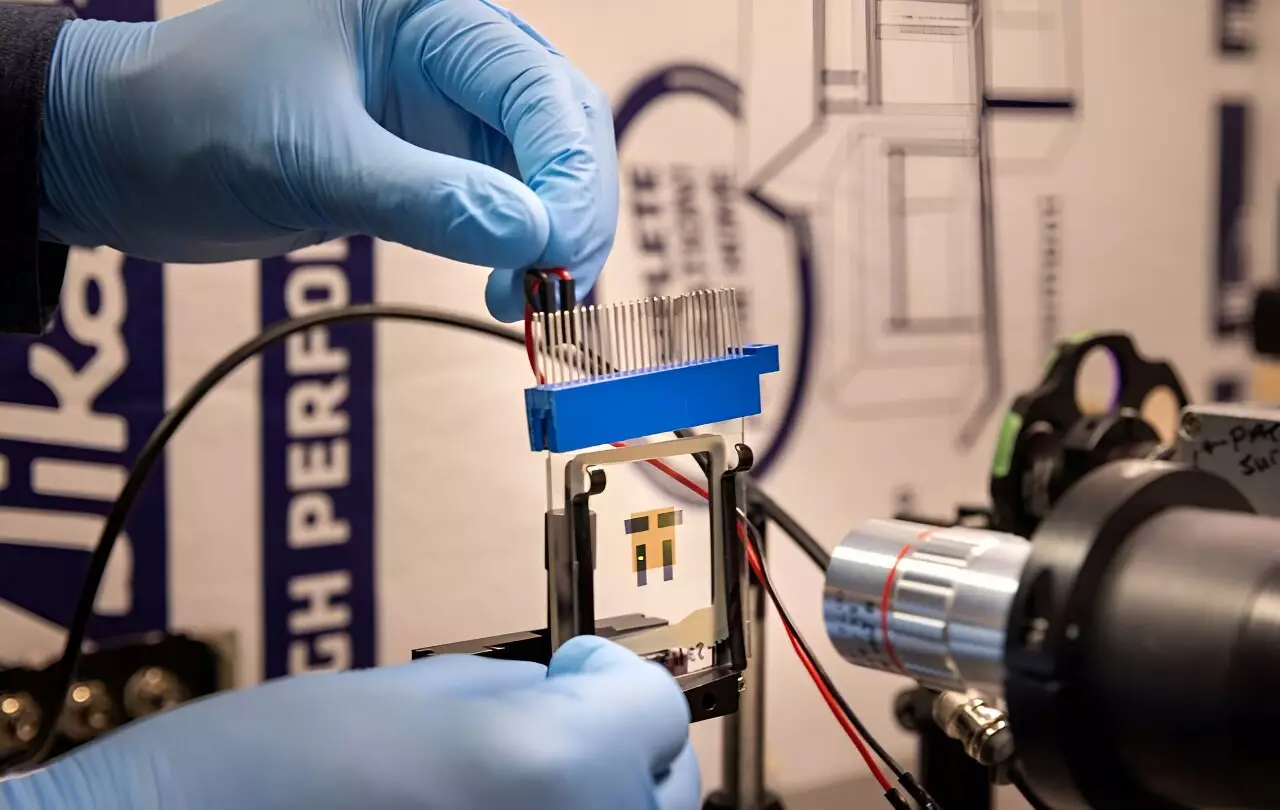Recent advancements in organic light-emitting diode (OLED) technology, as reported by researchers from the University of Michigan, could significantly transform the field of night vision. Instead of traditional, bulky night-vision goggles, the emerging OLED technology promises lightweight glasses that not only enhance practicality and comfort but also reduce production costs. Published in the journal Nature Photonics, this research introduces a novel method that could reshape how we perceive and utilize low-light environments.
To appreciate the magnitude of this innovation, it’s imperative to understand the existing night vision technology. Conventional systems utilize image intensifiers that convert near-infrared light into a stream of electrons. These electrons are accelerated in a vacuum chamber and collide with a phosphor screen, resulting in a highly amplified image—up to 10,000 times brighter than the original light. This intricate mechanism, while effective, is laden with disadvantages: high voltage requirements, heavy equipment, and significant power consumption, all of which make sustained use difficult.
The newly developed OLED devices offer a viable alternative by converting near-infrared light into visible light with a much lower amplification of over 100 times, without the cumbersome infrastructure of traditional systems. The device consists of a thin film that is less than a micron thick—substantially thinner than a human hair—indicating a significant advance in miniaturization. As professor Chris Giebink highlights, the reduced size facilitates ease of use and portability, paving the way for applications in various fields, from military to personal security.
One of the standout features of this new technology is its low-voltage operation, which directly translates to reduced power consumption. Efficient battery usage is critical, especially in scenarios where users rely on night vision for extended periods, such as search and rescue missions or various tactical operations. The integration of a photon-absorbing layer is crucial because it converts infrared light into a flux of electrons, which are then manipulated within a five-layer OLED stack to produce visible light photons. This process enhances momentum, producing multiple photons per electron, thereby maximizing the output with minimal input energy.
A significant scientific achievement of this study is the establishment of high photon gain in a thin film device. Unlike previous OLED technologies that produced a one-to-one ratio of input and output, the newfound capability allows for a cascade effect in which several photons are generated from a single electron. As Raju Lampande, the lead author, articulates, achieving this level of amplification represents a foundational leap in OLED efficiency. The ramifications of this discovery extend far beyond traditional applications, hinting at potential uses in areas such as consumer electronics and medical imaging.
The researchers also uncovered an intriguing “memory” aspect in their OLED devices, functioning through a phenomenon known as hysteresis. Essentially, the light output of the device depends on the history of input illumination, allowing the system to ‘remember’ previous light intensities. This characteristic could have groundbreaking implications for computer vision systems, potentially allowing for the intelligent processing of visual data. By mimicking the human visual system’s neural processing, these OLEDs could interpret and classify images based on prior signals, reducing the need for external computing units.
An exciting development in this research is that the materials and methods used to fabricate the OLED devices align closely with current manufacturing practices in the OLED industry. This compatibility not only enhances the prospects for cost-effective scalability but also accelerates the timeline for deploying this technology in real-world applications. As interest expands, the potential benefits range from military enhancements to consumer applications—revolutionizing nighttime visibility in various sectors of society.
The advancements in OLED technology as explored by University of Michigan researchers signal a new era for night vision capabilities. With this innovative device ushering in a paradigm shift from bulky goggles to sleek, lightweight glasses, we stand on the precipice of a future where enhanced visibility comes without the usual trade-offs. As exploration continues, we can expect further refinements that will not just amplify light but also transform how we interact with our environments under low-light conditions.

